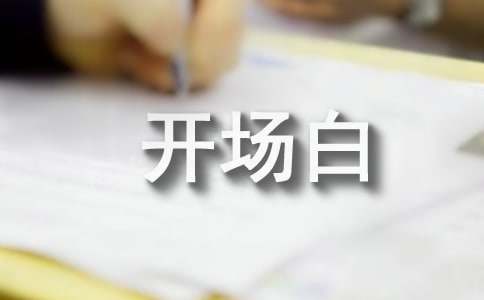英語(yǔ)畢業(yè)論文答辯自述開(kāi)場(chǎng)白
Good morning, all appraiser committee members. I am **** and my supervisor is ***. With her constant encouragement and guidance, I have finished my paper. Now, it is the show time. I will present my efforts to you and welcome any correction.

The title of my paper is On Transformation of Parts of Speech in Translation. I choose this as my topic due to the following reasons. Different languages have different standards to distinguish parts of speech. Each language has its own special structure. And there are no equivalent parts of speech between different languages. In order to make the target version more idiomatic and standard, the transformation of parts of speech is always used by translators. So the transformation of parts of speech is playing a more important role in English to Chinese based on different characteristics of English and Chinese. For the above facts, I select the subject of“On Transformation of parts of speech”as the title of my paper.
I hope by studying this topic we can know the importance of the transformation of parts of speech in English to Chinese translation. Through transformation, we can get the better version and improve the translation skills.
The way of thinking and expressing is quite different between Chinese and English. English is a kind of static languages which tends to use more nouns. While Chinese is a dynamic one in which verbs are often used.
So when we make translation in English to Chinese, we should know this point and shift the parts of speech.
Next, it is an outline of my paper. In the main part of this paper, I divide it into five parts.
Part one presents an introduction to the basic concepts of parts of speech and transformation.
Part two discusses the definition of translation and emphasizes the importance of transformation of parts of speech in the course of translation.
Part three gives four basic ways of transformation of parts of speech through illustrative examples. There are transformed English words into Chinese verbs, nouns, adjectives and adverbs.
Part four presents some problems about transformation and gives some advise to solve the problems.
Part five draws some conclusions that transformation between parts of speech is necessary for us to achieve good translation. It is demonstrated that we can have a good master of transformation and improve the translation. In addition, we must continuously study and explore in all kinds of translation practices.
OK! That is all. Thank you! Please ask questions.
【英語(yǔ)畢業(yè)論文答辯自述開(kāi)場(chǎng)白】相關(guān)文章:
英語(yǔ)畢業(yè)論文答辯自述12-06
英語(yǔ)畢業(yè)論文答辯開(kāi)場(chǎng)白03-28
英語(yǔ)專(zhuān)業(yè)畢業(yè)論文答辯自述報(bào)告03-23
英語(yǔ)專(zhuān)業(yè)畢業(yè)論文答辯自述稿范文06-29
畢業(yè)論文答辯自述稿12-03
文學(xué)畢業(yè)論文答辯自述11-16
畢業(yè)論文答辯自述技巧11-14
最新畢業(yè)論文答辯自述03-27
英語(yǔ)專(zhuān)業(yè)畢業(yè)論文答辯的開(kāi)場(chǎng)白范例11-29
- 相關(guān)推薦